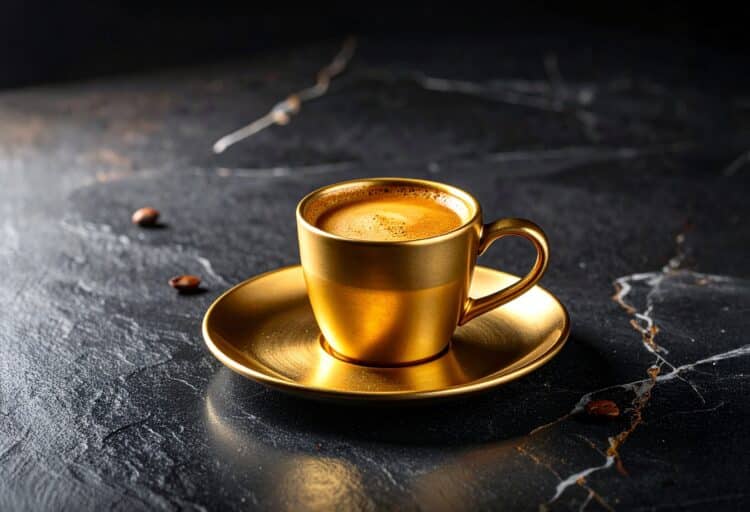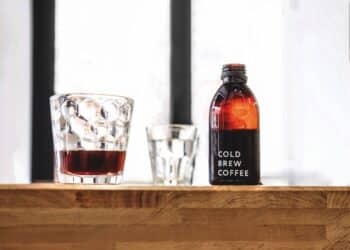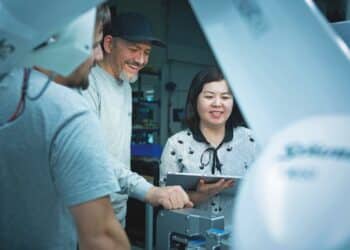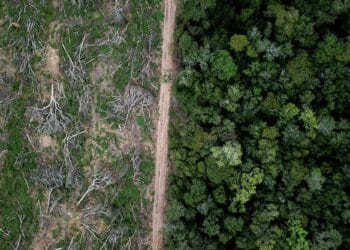With lots reaching record-breaking prices, how has the coffee auction landscape changed over the past 25 years – and who are the buyers willing to pay more than $10,000 per kilogram?
In August 2025, the coffee community collectively spluttered over their morning brews when news broke that a Hacienda La Esmeralda lot at the Best of Panama auction sold for US$30,204 per kilogram. The winning tender after 549 bids more than tripled the previous highest price secured at the 2024 edition of the event, which stood at $10,013 per kilogram.
The lot winner was Julith Coffee & Roasters in Dubai, which had opened just one week prior to the auction. At the price paid for the beans, the Emirati roaster would need to charge about $545 per 18-gram double shot to break even without factoring in labour, equipment, or other overheads.
Commenting just after the auction success, Julith’s Head Coffee Roaster – and Turkish Barista Champion – Serkan Sagsoz outlined his ambitions at the new venture.
“Bringing the world’s most celebrated coffee to our roastery in Dubai is a true honour,” he said. “At Julith, we believe that exceptional coffee deserves a global stage, and this acquisition is a bold step towards that vision.”
Yet, this mammoth bid wasn’t a one off. Over the past few years, record auction prices have continued to not just be exceeded but obliterated.
In September 2025, Alo Coffee in Ethiopia sold a single lot for US$1739 per kilogram, exceeding the country’s previous record achieved just a few months earlier. In the same month, Best of Yemen set a new benchmark of $1878 per kilogram – the third consecutive year the auction had broken the global record for Yemeni coffee prices.
While these auctions of the top 0.1 per cent of coffees make great headlines, they also raise questions such as, what’s their impact on the wider industry, will this trend for extreme prices continue, and who’s purchasing $500 espressos? To answer these, it’s worth first exploring the history of coffee auctions.
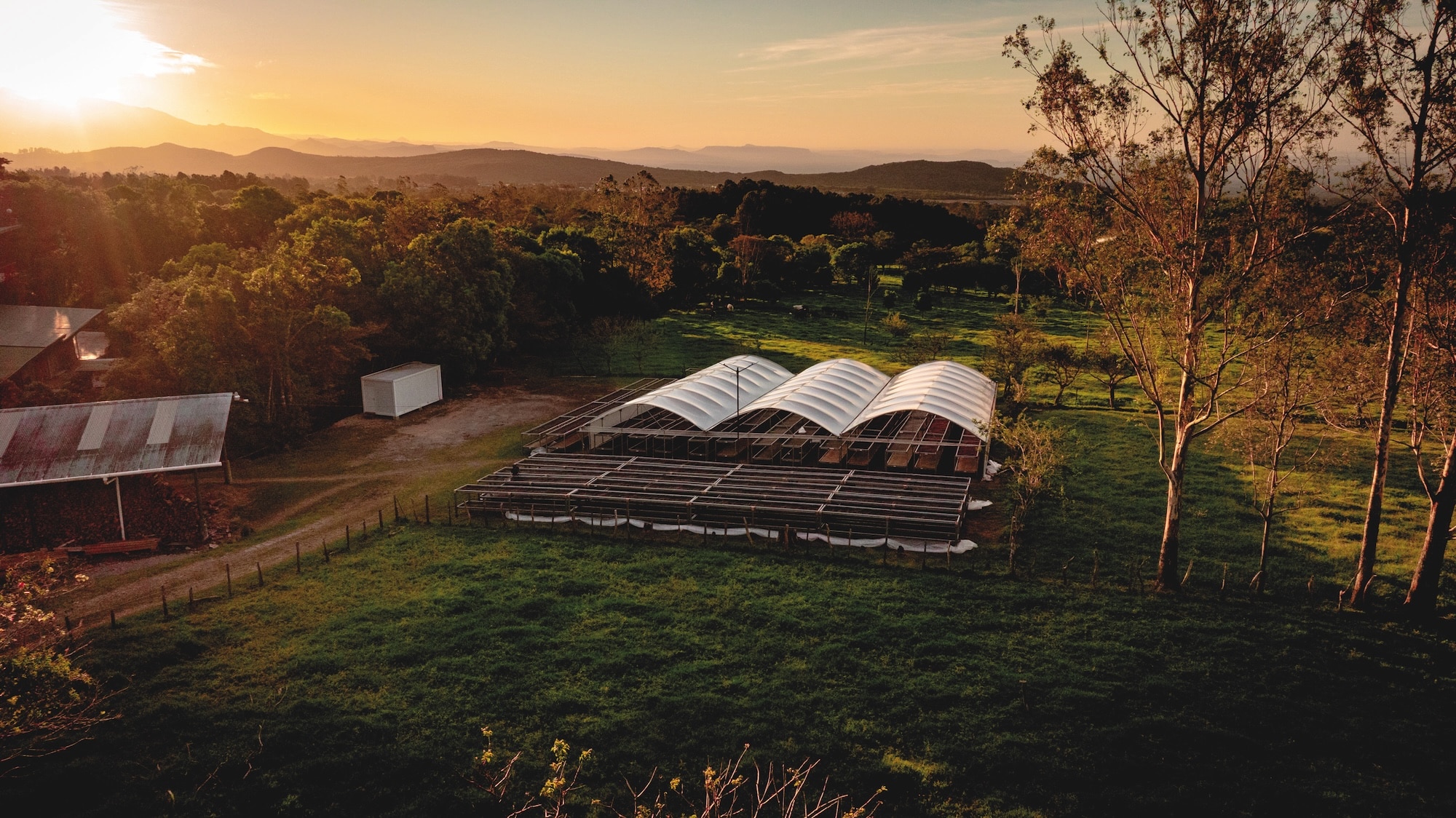
Going, going, gone!
Auctions have long played a role in the history of coffee trading, with the formalised sales system first introduced in the early 20th century and soon becoming a common method of trading beans. Yet, by the end of the century, auctions had largely fallen out of favour as the futures market matured, origin countries were liberalised, and direct trade became more common place.
Not long after this, however, trading via auction was adopted by the organisers of the Cup of Excellence (CoE) competition to connect farmers with buyers who were willing to pay a premium for quality.
“Initially, CoE began as an experiment to see if buyers would come to origin, discover coffees they did not know existed, and then pay a higher price for coffees they felt were a higher quality,” says Susie Spindler, Founder of Cup of Excellence.
“We built a mechanism to allow any roaster anywhere in the world the opportunity to buy these coffees. Previously, many of these coffees never had the chance to be experienced. Online auctions to sell coffees are more common now, but CoE was the first organisation to do this.”
In the 26 years since the competition was established in Brazil, CoE has given thousands of farmers across the world the opportunity to have their coffee evaluated by international experts, and roasters the opportunity to access some of the best and most interesting beans.
“More than simply rewarding an outstanding lot, the program was designed to create opportunities for lasting relationships between producers and buyers – relationships that continue to change lives and markets today,” Spindler says.
While the organisation now operates annual auctions in 17 producing countries, the beans featured in the competitions only represent an incredibly small proportion of the coffee grown around the world each year. However, Spindler believes the events have had a profound impact on the wider coffee industry over the past quarter decade.
“CoE has set new benchmarks for quality and fairness,” she says. “It introduced a trusted system where traceability and integrity are non-negotiable, inspiring other competitions, direct-trade relationships, and even the way specialty coffee is defined today.”
In the specialty sector, relationships with farmers are often a key marketing tool and many roasters make trips to origin to meet the producers they work with. Spindler says that before CoE, it was uncommon for buyers to meet farmers and build personal relationships.
“Twenty-five years ago, it was extremely rare to identify regions, much less farmers. However, regions in coffee growing nations are now identified and traceable,” she says.
“Thousands of farmers have been introduced to the global market through these auctions, and many have gone on to build strong, long-term partnerships with buyers that outlast the competition itself. That’s the real measure of impact: sustainable business, not just a single sale.”
Erwin Mierisch, Executive Director of CoE, believes the culmination of these ripple effects from the growth of auctions and competitions such as CoE has resulted in a focus on quality and innovation right across the coffee industry – not just the top 0.1 per cent.
“Auctions with inclusiveness and judged by independent non-influenced judges show the true value of coffee. They create a transparent platform where quality sets the price, and this encourages farmers to invest in excellence,” he says.
“Even if only a handful of lots sell at record-breaking levels, the ripple effect is much broader: it sparks innovation at farm level and gives roasters powerful stories to share.”
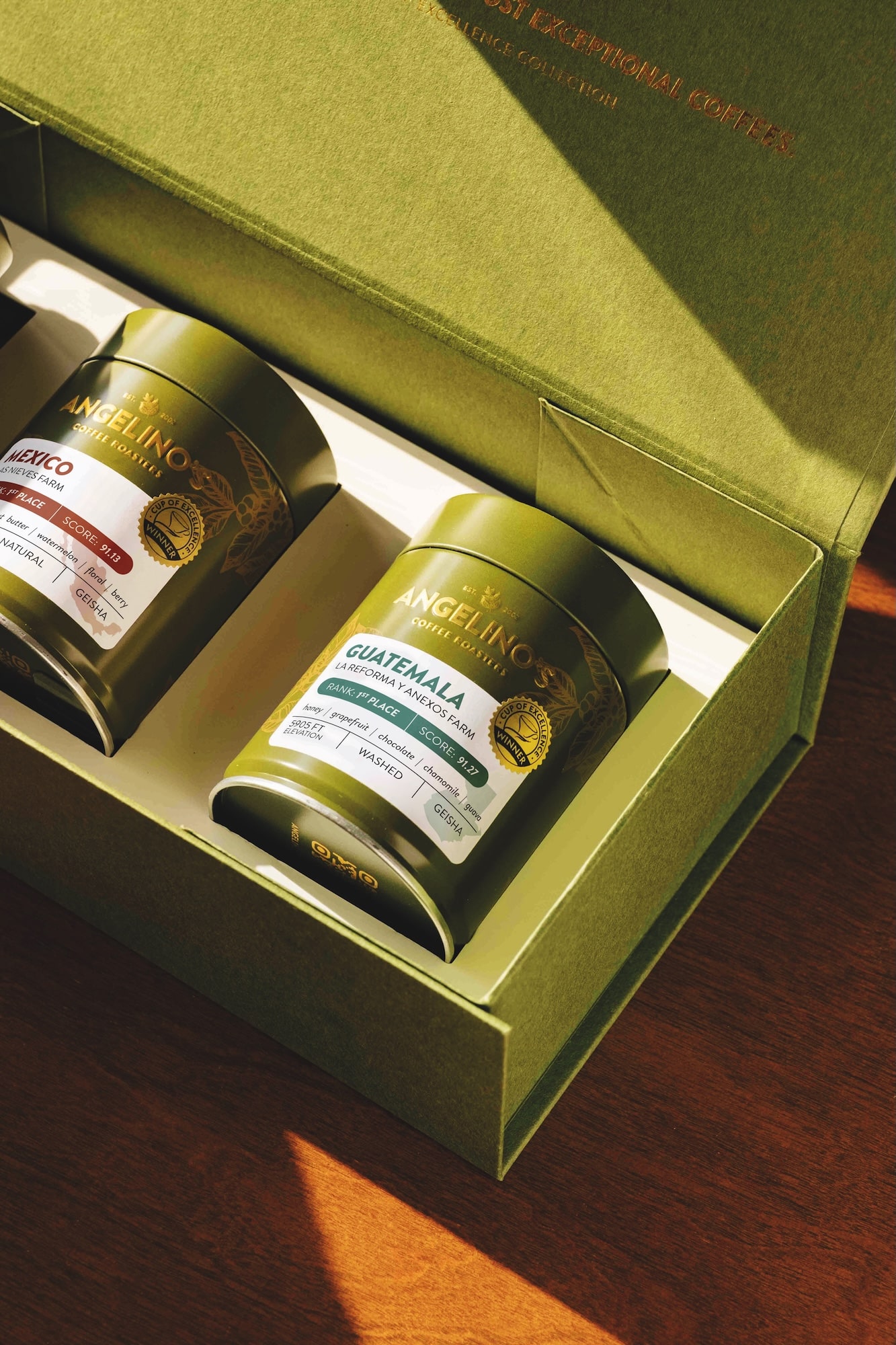
Coffee in the US bought
16 Cup of Excellence winners. Image: Angelino’s Coffee.
The Panama effect
If there’s one country, and specifically one varietal, that exemplifies the broader impact of coffee auctions, it’s Panama Geisha. Known for its delicate floral and stone-fruit notes, it is associated with extremely high-cup quality and is one of the world’s most well-known coffees – often used by World Barista Champions on the international stage.
The varietal first rose to fame in 2004, when family-run coffee farm Hacienda La Esmeralda won the Best of Panama auction for its pioneering Panama Geisha. The lot set a new price benchmark in the auction space, achieving a world record of $9.50 per kilogram, and launched the farm in the Boquete Highlands into international stardom.
Rachel Peterson, a member of the Peterson family who run the coffee farm, says the 2004 auction was a “before and after moment” for Hacienda La Esmeralda.
“The Geisha lot’s performance redefined what Panama, Geisha, and Arabica more broadly could express in the cup,” she says.
“It catalysed our modern approach: finer plot separations, rigorous sensory quality control and agronomic research development, and direct long-term partnerships. It also helped open the market’s ceiling for many other producers to pursue coffees of different varietals at sustainable premiums.”
Since 2004, Hacienda La Esmeralda has taken the top spot at Best of Panama on six more occasions as well as securing first place in the Geisha Natural category four times and the Varietals category twice. Peterson says since their early success with the varietal, many new farms have had the time to cultivate Geisha and the competition has become much fiercer.
Despite this, in 2025 the farm won the triple crown at Best of Panama, achieving first place in all three categories (Geisha Washed, Geisha Natural, and Varietals). Since 2008, it has also held its own private estate auction. Peterson says these events have benefited the wider coffee sector in many ways.
“Auctions have raised the ceiling on price and prestige, rewarding excellence. They’ve opened spaces for price differentiations according to cup quality, varietals, origins, and processes,” she says.
“They’ve also accelerated traceability and consumer education, which lifts origin brands. What’s more, they’ve allowed investment in processing and innovation techniques by rewarding precisely these things.”
Peterson does admit that there are also downsides to the system, highlighting that these record-prices can skew conversations on pricing.
“On the downside, volumes are small and price signals can be misunderstood. Auctions serve the coffee ecosystem as a marketing tool, but absolutely not as a pricing tool,” she says.
“However, for top producers, auctions deliver global validation, new relationships, and halo effects that support broader lines.”
Coffee’s most expensive marketing tool?
Receiving five minutes of fame for scoring the world’s most expensive coffee is all well and good, but does buying record-breaking lots actually work as a marketing tool for specialty roasters?
In 2024, Los-Angeles-based roaster Angelino’s Coffee purchased 16 CoE winners, including 12 first-place lots. Founder Kirk Bedrossian says his motivation wasn’t only to secure rare coffees but also to define the Angelino’s brand and demonstrate the level his team are willing to play at.
“I had had my eye on CoE for years because it is the gold standard. But in 2024, we decided to step up and compete at the highest level,” he says.
“Why? Because it is the purest way to honour farmers and push quality. It is where reputations are made, and where you find coffees that remind you why this industry matters.”
For a specialty roaster like his, Bedrossian says there are two major benefits of buying award-winning coffees: impact and experience.
“Farmers receive life-changing premiums and customers get to taste coffees that defy expectations,” he says.
“It’s not just drinking coffee, it’s like opening a vintage bottle of wine you will never forget. We do not just sell beans, we share experiences and stories through cups that can stop you in your tracks.”
Bedrossian explains that these coffees will never be Angelino’s bread and butter, but instead the brand’s “crown jewels that define who we are and what we stand for”. Despite this, he says when they do release the award-winners they don’t stick around for long.
“We release them in carefully roasted batches and once customers get a taste, the word spreads quickly. These coffees have a way of moving faster than most, which adds to the excitement of each release,” he says.
“Coffee has entered the same lane as wine and whiskey. People are chasing rare drops, bragging rights, and unforgettable experiences. We are building that bridge between everyday coffee drinkers and the luxury tier.”
Billionaire coffee buyers
So, who are the people buying these record-breaking beans and what’s driving the market for luxury coffees? Someone who knows this emerging sector well is David Paparelli, CEO of auction, technology, and financing provider M-Cultivo.
Established in 2020, the company was launched to create opportunities for specialty coffee producers to grow their businesses through connection with buyers. It served as the auction platform for CoE from 2022 to 2025, and now hosts specialty coffee auctions across the world with private producers, businesses, and organisations.
“Over the past three years, we’ve seen an evolution of the auction space into the next level of luxury class, where it deserves to be among wine, whiskeys, watches and art,” says Paparelli.
“The beautiful thing about auctions is the efficiency of them. The coffees are worth whatever someone is willing to pay for them.
“Most importantly, information is transparent. You don’t have the problem of asymmetry where one party is negotiating as one of the biggest importers in the world and the other is a small producer trying to compete on price.”
Paparelli portions the buyers of these luxury coffees into four categories: importers, roasters, luxury brokers, and personal shoppers for billionaires. He says for roasters and importers, the beans provide a ‘halo effect’ for the brand, while for private buyers they offer the thrill of experiencing the crème de la crème of the coffee world.
“For a private producer or producing country in general, auctions are an excellent marketing, branding, and promotional event,” he says.
“It also sets an anchoring price for any future negotiations. If a producer sells a coffee for $30,000 per kilogram, it’s going to be hard to argue that the rest of their coffee is worth $4 per pound at the C market price. It has ripple effects on the rest of their brand and their local ecosystem – it certainly benefits the wider market, just look at Panama and more recently Ethiopia.”
More records to break
With this new class of luxury beans, Paparelli predicts the trajectory of incredibly high auction prices will continue.
Spindler also believes the consumer demand for memorable coffee experiences such as those presented with fine wines and whiskies will see a continued willingness to pay more.
“Record prices are an expression of passion, rarity, and recognition. While not every year or every origin will break records, the long-term trend points to a growing appreciation of coffee as a luxury product at its highest level,” she says.
Following Angelino’s huge year of pursuing CoE lots, these winning beans will continue to be a priority for the roaster. Bedrossian believes these auctions play a significant role for the entire coffee industry.
“When a coffee sells for hundreds of dollars per pound, the entire industry pays attention. Farmers rethink what is possible, importers raise their standards, and consumers begin expecting more,” he says.
“Auctions are where the future of coffee is written, and the ripple effects spread everywhere.”
This article was first published in the November/December 2025 edition of Global Coffee Report. Read more HERE.

